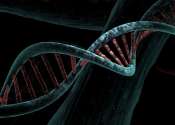How bacteria can survive in acidic, metal rich environments
Acid-loving bacteria thrive in sour, acidic places and can help to dissolve metal. Therefore they are often used for industrial metal extraction. In her doctoral thesis "Growth and Survival of Acidithiobacilli in Acidic, ...




